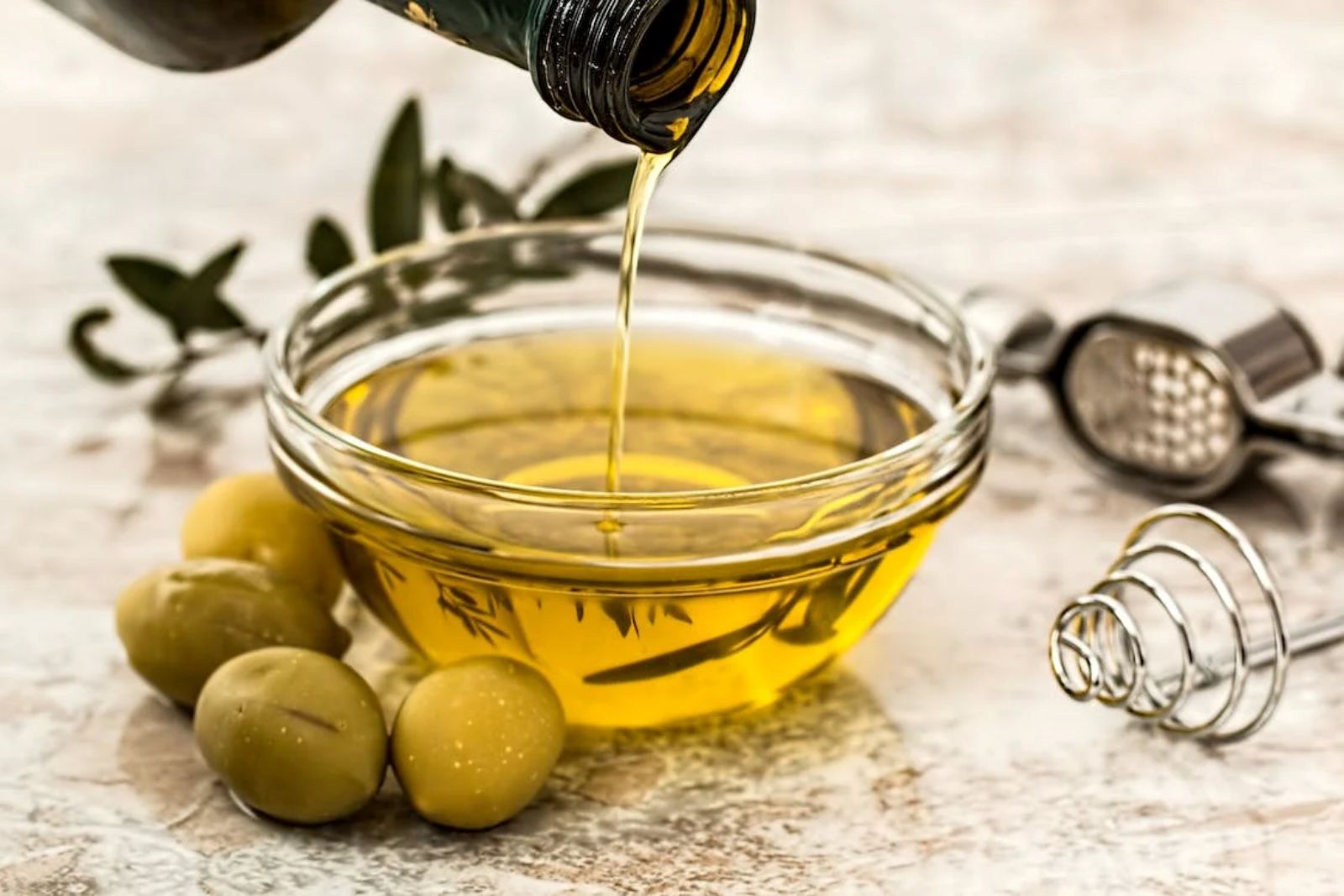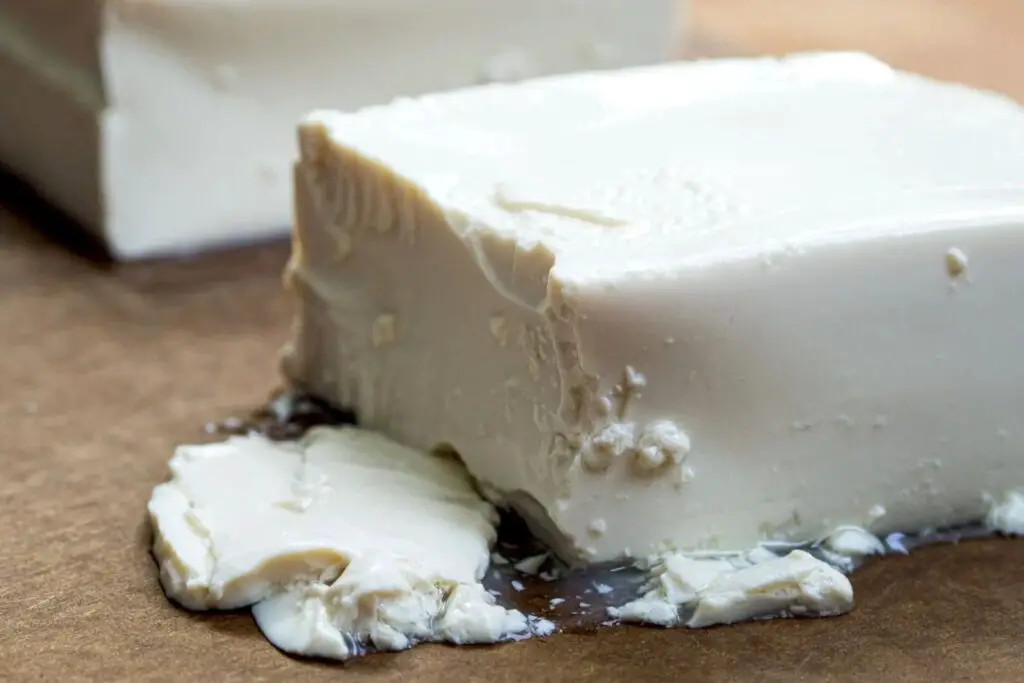
Olive oil is a versatile and healthy cooking oil that is widely used in various cuisines. It is known for its distinct flavor and numerous health benefits. Freezing olive oil can be a convenient way to preserve its freshness and ensure its availability for future use. By following a few simple steps, you can freeze olive oil effectively, maintaining its quality and flavor. This article provides a comprehensive guide on how to freeze olive oil, allowing you to enjoy its benefits even when it’s out of season.
Here’s a step-by-step guide on how to freeze olive oil:
Step 1: Choose high-quality olive oil
When it comes to freezing olive oil, the quality of the oil plays a significant role in determining the final outcome. Selecting a high-quality olive oil is crucial to ensure the best flavor and overall preservation of the oil.
It is recommended to choose extra virgin olive oil (EVOO) or any other type of olive oil that you prefer. Extra virgin olive oil is made from the first pressing of olives, and it undergoes minimal processing, making it the highest quality and most flavorful option. However, if you have a specific preference for a different type of olive oil, such as virgin or regular olive oil, you can use that as well.
Freshness is key when selecting olive oil for freezing. Check the expiration date or harvest date on the bottle to ensure that the oil is within its recommended shelf life. Using olive oil that has passed its expiration date or has been stored for too long may result in a diminished flavor and quality.
Inspect the olive oil for any signs of contamination or rancidity. Look for any off-putting smells, flavors, or discoloration, as these could indicate that the oil has gone bad. It’s important to freeze olive oil that is free from any contaminants to maintain its integrity during storage.
Step 2: Prepare appropriate containers
Choosing the right containers for freezing olive oil is crucial in maintaining its quality and preventing any potential issues during storage. Here’s why it’s important to select suitable containers:
- Material: Opt for glass or BPA-free plastic containers. Glass is an excellent choice because it is non-reactive and does not leach any chemicals into the oil. BPA-free plastic containers are another option, as they are designed to be safe for food storage. Avoid containers made from materials that may interact with the oil and affect its flavor or quality.
- Airtight lids: Use containers with secure and airtight lids. Proper sealing is essential to prevent air exposure, which can lead to oxidation and rancidity of the olive oil. Airtight lids also help maintain the oil’s flavor and prevent any absorption of unwanted odors from the freezer.
- Leak prevention: Ensure that the containers are leak-proof. Olive oil can be messy if it leaks during freezing or thawing, and it can also result in a loss of oil. Containers with a reliable sealing mechanism will prevent any leakage, keeping your freezer clean and preserving the oil effectively.
- Size and shape: Consider the size and shape of the containers based on your needs. It’s recommended to use smaller containers rather than one large container. Freezing olive oil in smaller portions allows you to thaw only what you need, reducing waste. Additionally, smaller containers freeze faster and more uniformly.
Can I freeze olive oil in its original bottle?
It’s generally not recommended to freeze olive oil in its original bottle, especially if it’s made of glass. Freezing can cause glass to crack or break due to the expansion of the oil. Transfer the olive oil to suitable freezer-safe containers with airtight lids for safe and efficient freezing.
Can I freeze olive oil in ice cube trays?
Yes, freezing olive oil in ice cube trays is a convenient way to portion it for later use. Once frozen, transfer the olive oil cubes to airtight freezer bags or containers to prevent freezer burn and maintain quality.
Can I freeze olive oil in silicone molds?
Yes, silicone molds can be used to freeze olive oil for portioning. Once frozen, remove the oil portions from the molds and transfer them to airtight containers for long-term storage in the freezer.
Can I freeze olive oil in stainless steel containers?
It is not recommended to freeze olive oil in stainless steel containers as the metal can affect the flavor and quality of the oil. It is best to use glass or BPA-free plastic containers for freezing olive oil.
Step 3: Pour the olive oil into the containers
Once you have selected the appropriate containers for freezing olive oil, it’s time to transfer the oil into them. Here’s why it’s important to pour the oil carefully and leave some headspace:
- Expansion during freezing: Olive oil, like many other liquids, expands when it freezes. If you fill the containers to the brim, the expansion of the oil can cause the containers to burst or crack, resulting in a messy and potentially dangerous situation in the freezer. Leaving some headspace allows room for the oil to expand without causing any damage.
- Preventing leakage: Leaving space at the top of the container also helps prevent any potential leakage during freezing. As the oil expands, it may push against the lid or create pressure within the container. Having some headspace acts as a buffer, reducing the risk of oil spilling out or compromising the container’s seal.
- Ease of handling: Leaving some room at the top of the containers makes them easier to handle and reduces the likelihood of spills when you need to move or open them. It provides a convenient space for the oil to move within the container without overflowing.
To pour the olive oil into the containers, do so slowly and carefully to avoid any spills or mess. Leave approximately 1/2 inch to 1 inch of headspace at the top, depending on the size of the container and the amount of oil being frozen.
By leaving sufficient headspace when pouring the olive oil into the containers, you ensure that the freezing process goes smoothly without any risks of container damage or leakage. It’s a simple step that helps maintain the integrity of the olive oil throughout its time in the freezer.
Step 4: Seal the containers
After pouring the olive oil into the containers, it is essential to seal them tightly to protect the oil from air exposure and prevent freezer burn. Here’s why proper sealing is important:
- Preventing air exposure: Olive oil can be sensitive to oxygen exposure, which can lead to oxidation and the degradation of its flavor and quality. By tightly sealing the containers, you create a barrier that minimizes the contact between the oil and the surrounding air, helping to maintain its freshness.
- Avoiding freezer burn: Freezer burn can occur when the surface of food comes into contact with air in the freezer. While olive oil doesn’t freeze solid like water, it can still be susceptible to freezer burn if not adequately protected. Properly sealed containers create a barrier that helps prevent the oil from being affected by the cold, dry air in the freezer, preserving its texture and flavor.
- Maintaining quality: A tight seal on the containers ensures that the olive oil retains its desired flavor and quality throughout its time in the freezer. It prevents any potential absorption of unwanted odors from other freezer items and keeps the oil in its pristine state until you’re ready to use it.
To seal the containers effectively, ensure that the lids are properly closed and tightly secured. Check for any signs of loose or damaged lids that might compromise the seal. If using containers with screw-on lids, make sure to twist them firmly until they are snugly in place. For containers with snap-on or clamp lids, ensure they are securely locked. A proper seal will help maintain the quality of the olive oil during freezing and storage.
Step 5: Label and date the containers
After sealing the containers of frozen olive oil, it’s important to label each one with the date of freezing. This simple step helps you keep track of the storage time and ensures that you use the oldest oil first. Here’s why labeling and dating the containers is beneficial:
- Identification: When you freeze olive oil, it may become difficult to distinguish it from other frozen items in your freezer, especially if it solidifies or takes on a different appearance. By labeling the containers, you can easily identify which ones contain olive oil, saving you time and effort when retrieving them.
- Storage rotation: Labeling the containers with the date of freezing allows you to practice proper storage rotation. Olive oil, like any food item, has a limited shelf life even when frozen. By using the oldest oil first, you ensure that none of the containers remain in the freezer for an extended period, reducing the risk of quality degradation over time.
- Preventing waste: By being aware of the date of freezing, you can avoid keeping frozen olive oil for longer than recommended. It helps you use the oil within its optimal storage period, preventing unnecessary waste and ensuring that you enjoy the oil at its best quality.
To label the containers, use a marker or adhesive labels that adhere well to the container material. Write the date of freezing prominently on each container, ensuring it is clear and visible. If you have multiple containers frozen at different times, consider labeling them sequentially or using a numbering system to maintain order.
Step 6: Place the containers in the freezer
Once you have sealed the containers of olive oil, it’s time to place them in the freezer for proper storage. Here’s why it’s important to choose the right location in the freezer:
- Stability and protection: Select a spot in the freezer where the containers won’t be easily disturbed or jostled. Avoid placing them in areas where they might be bumped or moved around frequently. This ensures that the containers remain stable and protected from any potential damage that could compromise the integrity of the olive oil.
- Temperature consistency: Freezers can have temperature fluctuations, especially when opened frequently or when other items are added or removed. It’s ideal to choose a location in the freezer where the temperature remains relatively consistent. Avoid placing the olive oil containers near the freezer door or in areas that are prone to temperature changes, such as near the vents or on the top shelf.
- Odor absorption prevention: Olive oil has a porous nature and can absorb odors from strong-smelling foods in the freezer. To preserve the flavor and quality of the olive oil, it’s advisable to keep the containers away from strong-smelling foods like onions, garlic, or fish. This prevents any potential cross-contamination of flavors and ensures that the olive oil retains its desired aroma.
By choosing a stable location with consistent temperatures and keeping the containers away from strong-smelling foods, you create an optimal environment for freezing the olive oil. This helps maintain the quality, flavor, and aroma of the oil, ensuring that it remains in pristine condition until you’re ready to use it.
Remember to handle the containers with care when placing them in the freezer, ensuring they are properly arranged and won’t be easily disturbed. By following these guidelines, you can maximize the preservation of the olive oil during its time in the freezer.
Which temperature of freezer to freeze olive oil?
The ideal temperature for freezing olive oil is around -18 degrees Celsius (0 degrees Fahrenheit) or below. Most household freezers are set to maintain this temperature range, which provides optimal conditions for preserving the quality and freshness of the olive oil during freezing. It is important to ensure that the freezer maintains a consistent and sufficiently low temperature to effectively freeze the oil and prevent any potential degradation.
How long can I store frozen olive oil?
Frozen olive oil can be stored for up to 2 years without significant loss of quality if properly stored. Ensure the containers are airtight, labeled with the date of freezing, and stored in a consistent temperature freezer. Regularly check for signs of spoilage and discard any frozen olive oil that has gone bad.
Step 7: Thaw and use as needed
When the time comes to use the frozen olive oil, it’s important to thaw it properly to preserve its quality. Follow these steps to thaw the olive oil:
- Retrieve from the freezer: Remove the desired container of frozen olive oil from the freezer. Close the freezer promptly to maintain the temperature of the remaining items.
- Thaw in the refrigerator: Place the container in the refrigerator to thaw slowly. Thawing the olive oil in the fridge allows for a gradual and controlled thawing process, which helps preserve its quality. It may take several hours or overnight for the oil to thaw completely, depending on the size of the container and the temperature of the refrigerator.
- Avoid heat sources: Avoid thawing the olive oil at room temperature or using any external heat sources such as microwave or stovetop. Rapid thawing methods can negatively impact the flavor and quality of the oil. Slow and gentle thawing in the refrigerator is the recommended method.
- Check for consistency: Once the olive oil has thawed, check its consistency. It may appear slightly cloudy or solidified when frozen, but it should return to its liquid state once thawed. Give the container a gentle shake to ensure the oil has fully returned to its original texture.
- Use as desired: Once the olive oil has thawed and returned to its liquid state, it is ready to be used in cooking or dressing as desired. Measure out the amount needed for your recipe or pour it into a suitable container for easy access.
By thawing the frozen olive oil slowly in the refrigerator, you help maintain its flavor, texture, and overall quality. This gradual thawing process minimizes any potential damage that rapid thawing or exposure to heat sources could cause. Thawed olive oil can be used in various culinary applications, enhancing the taste of your dishes or dressings.
Other related questions
Can I refreeze olive oil?
No, it is not recommended to refreeze olive oil once it has been thawed. Refreezing olive oil can lead to further deterioration of its quality, including flavor changes and potential rancidity. It is best to thaw and use the olive oil as needed, ensuring proper storage to maintain its freshness.
How do I know if the olive oil has gone bad after being frozen?
After olive oil has been frozen, it can be challenging to determine if it has gone bad. Signs of olive oil spoilage include a rancid or off smell, a bitter or sour taste, or a cloudy appearance. If any of these indicators are present, it is best to discard the frozen olive oil to avoid unpleasant flavors or potential health risks.
Is it safe to freeze olive oil?
Yes, it is safe to freeze olive oil. Freezing helps to preserve its quality and prevent rancidity. Just ensure that the olive oil is stored in appropriate containers and follows proper freezing and thawing techniques.
Can I freeze flavored or infused olive oil?
Yes, you can freeze flavored or infused olive oil. However, keep in mind that freezing may alter the intensity of the flavors. It’s recommended to freeze flavored or infused olive oil in smaller portions to maintain their freshness and avoid thawing and refreezing repeatedly.
Can I use thawed olive oil for frying?
Thawed olive oil can be used for light sautéing or cooking, but it is not recommended for deep frying. Olive oil has a lower smoke point compared to other cooking oils, and freezing may further decrease its smoke point. For deep frying, it’s best to use fresh olive oil to ensure optimal results.
Can I freeze olive oil with herbs or garlic?
Yes, you can freeze olive oil with herbs or garlic. Freezing helps preserve their flavors. However, it’s important to note that the texture and appearance of the herbs or garlic may change after freezing. Consider freezing them separately or in smaller portions for convenient use in various dishes.
Can I freeze olive oil with spices or chili flakes?
Yes, you can freeze olive oil with spices or chili flakes. It can help infuse the oil with flavors. However, keep in mind that the intensity of the spices or chili flakes may change after freezing. Consider freezing them separately or in smaller portions for easy use.
Can I use frozen olive oil for salad dressings?
Thawed olive oil can be used in salad dressings. Allow it to reach room temperature before mixing it with other ingredients. Shake or whisk the oil well to ensure it emulsifies properly with the other dressing components.








